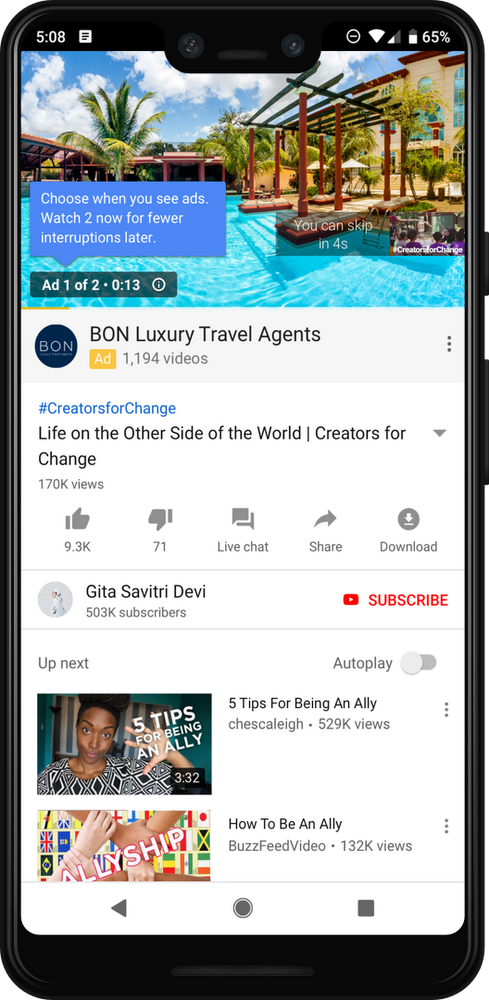YouTube Is Testing A Major Change To The Way It Shows Ads
YouTube has been testing a major change to the way it presents ads during videos, partly in response to the trend of users getting increasingly comfortable watching longer videos. Through its internal research, YouTube explains in a new company blog post, it's learned that interrupting viewers less often with ads correlates to better user metrics. Which is why the video streaming service has begun a test that shows viewers two skippable ads back-to-back at the beginning of a video.
"Why does this solution make sense?" YouTube wrote in its blog post. "Because when users see two ads in a break, they're less likely to be interrupted by ads later. In fact, those users will experience up to 40 percent fewer interruptions by ads in the session. Early experiment results also show an 8-11 percent increase in unique reach and a 5-10 percent increase in frequency for advertisers, with no impact to Brand Lift metrics."
That new ad presentation is coming first to YouTube's desktop experience, followed by mobile and TV screens in the near future. Here's an example of what you'd see on the screen, with a message explaining that you can watch two ads now for fewer interruptions later:

If it has the effect YouTube intends, this sounds like it will be a positive move for the service. Among the reasons why — people are increasingly watching YouTube on television, where YouTube is in fact growing faster than viewer growth on desktop and mobile. According to Phone Arena, more than 180 million hours of YouTube content is viewed on TV screens each day. Also, people are increasingly going directly to YouTube to initiate viewing sessions, more so than those users who click on social links or links in an email that open a YouTube video.
Additionally, according to Phone Arena, over the last three years users have increased the amount of time they spend watching content found on the YouTube home page by a factor of 10. All of which is to say, users are watching a ton more video, and an ad experience that's less onerous than the existing paradigm of breaks that are frequently jarring and come too often will likely be welcomed.
"In the face of these burgeoning user trends — as well as the next wave, and the next — we'll continue working to build the ideal video viewing experience, and keep thinking up ways to deliver value for our advertiser partners," YouTube says, by way of concluding its post explaining the ad test.